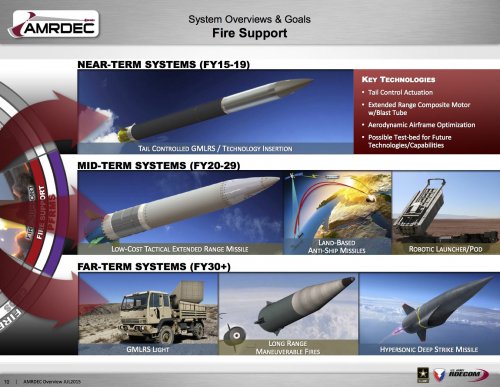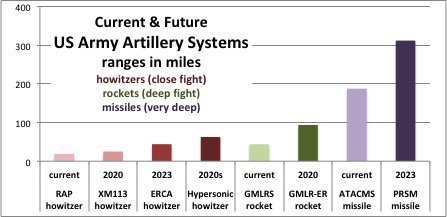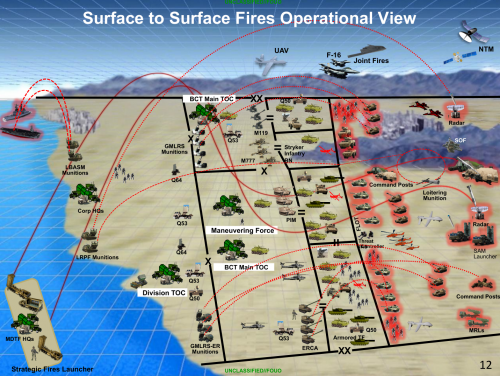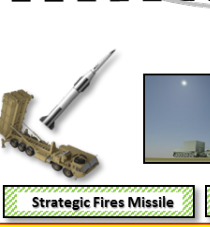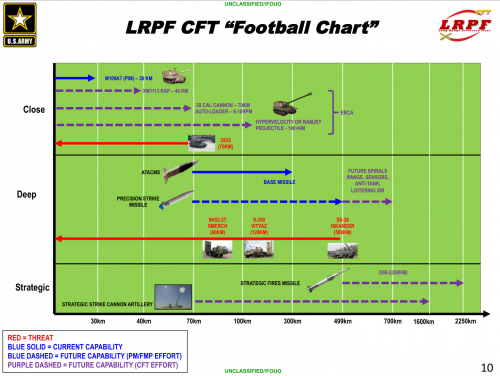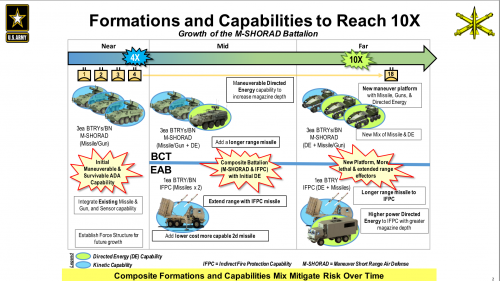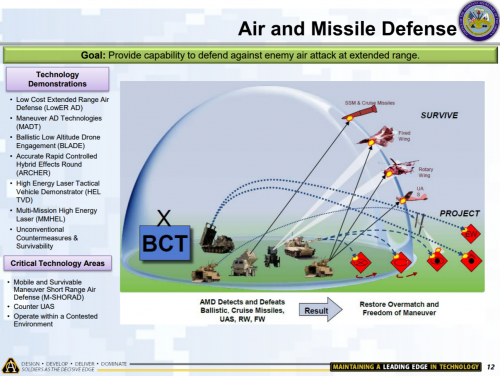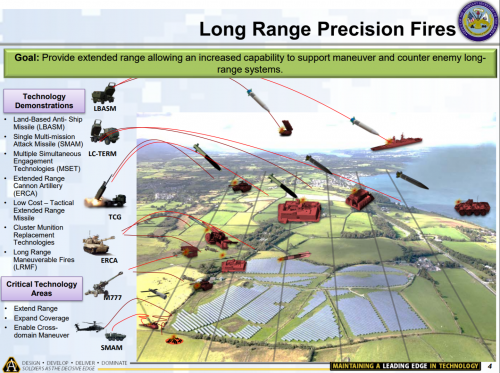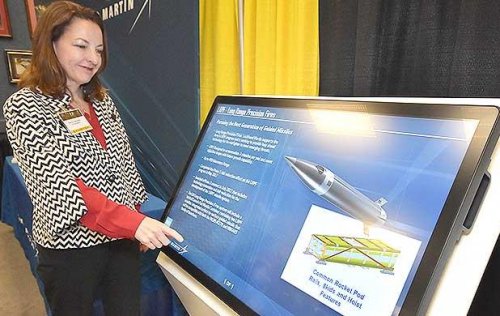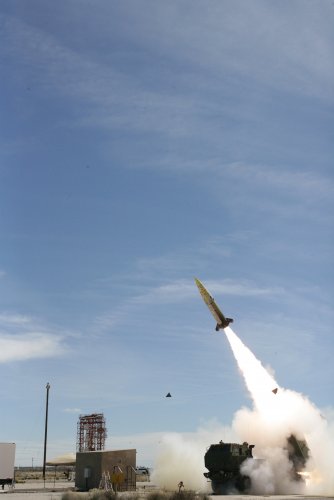AUSA GLOBAL FORCE SYMPOSIUM: To counter MiGs, Sukhois, Hinds, and missiles, the US Army is rushing anti-aircraft and anti-missile systems into service up to five years ahead of its original schedule. The head of the Army’s Air & Missile Defense Cross Functional Team, Brig. Gen. Randall McIntire, told me here the goal is to build on today’s uneven defenses — a lot of Patriot and a little THAAD to kill ballistic and cruise missiles, a few Stingers to down aircraft — and create multiple overlapping layers of protection.
The next five years will see a steady drumbeat of new systems:
2020: The first battery of MSHORAD, highly mobile, lightly armored Stryker vehicles with anti-aircraft guns and missiles to protect mobile frontline forces from enemy helicopters and drones. That’s five years ahead of the original fielding date, 2025.
Late 2020 or early ’21: A new network link between Patriot and THAAD missile defense batteries, so Patriot can both protect THAAD from air attack and use THAAD’s longer range radar to find targets. This link was originally going to wait until the IBCS network was fielded in 2022 (below).
2021: The IPFC Multi-Mission Launcher (MML), a truck-mounted system bigger and less mobile than MSHORAD. MML’s larger magazine of larger missiles can reach targets at higher altitudes and longer ranges, especially cruise missiles and fixed-wing aircraft, as well as helicopters.
2022: The IBCS network, which will share targeting data among all air and missile defense systems, allowing any launcher to fire at targets spotted by any radar. (IBCS will incorporate the THAAD-Patriot link). This is the one system that’s been delayed, although the decision to do so predates the creation of the CFTs: IBCS was originally going to be fielded this year, but software development proved daunting.
2023: The first prototype platoon of 50 kilowatt lasers mounted on Stryker vehicles, which will join MSHORAD missile launchers in frontline forces to defend against small drones. That 2023 date isn’t final, McIntire told the AUSA conference here: “We’re looking at, can we move that to the left a little bit?”
The Army is also working on a larger truck-mounted laser — less mobile but more powerful — in the 100 kW range. McIntire and his fellow officers didn’t offer a fielding date for that one. The Army has previously said it will be test-fired in 2022, but don’t be surprised if it’s accelerated.


